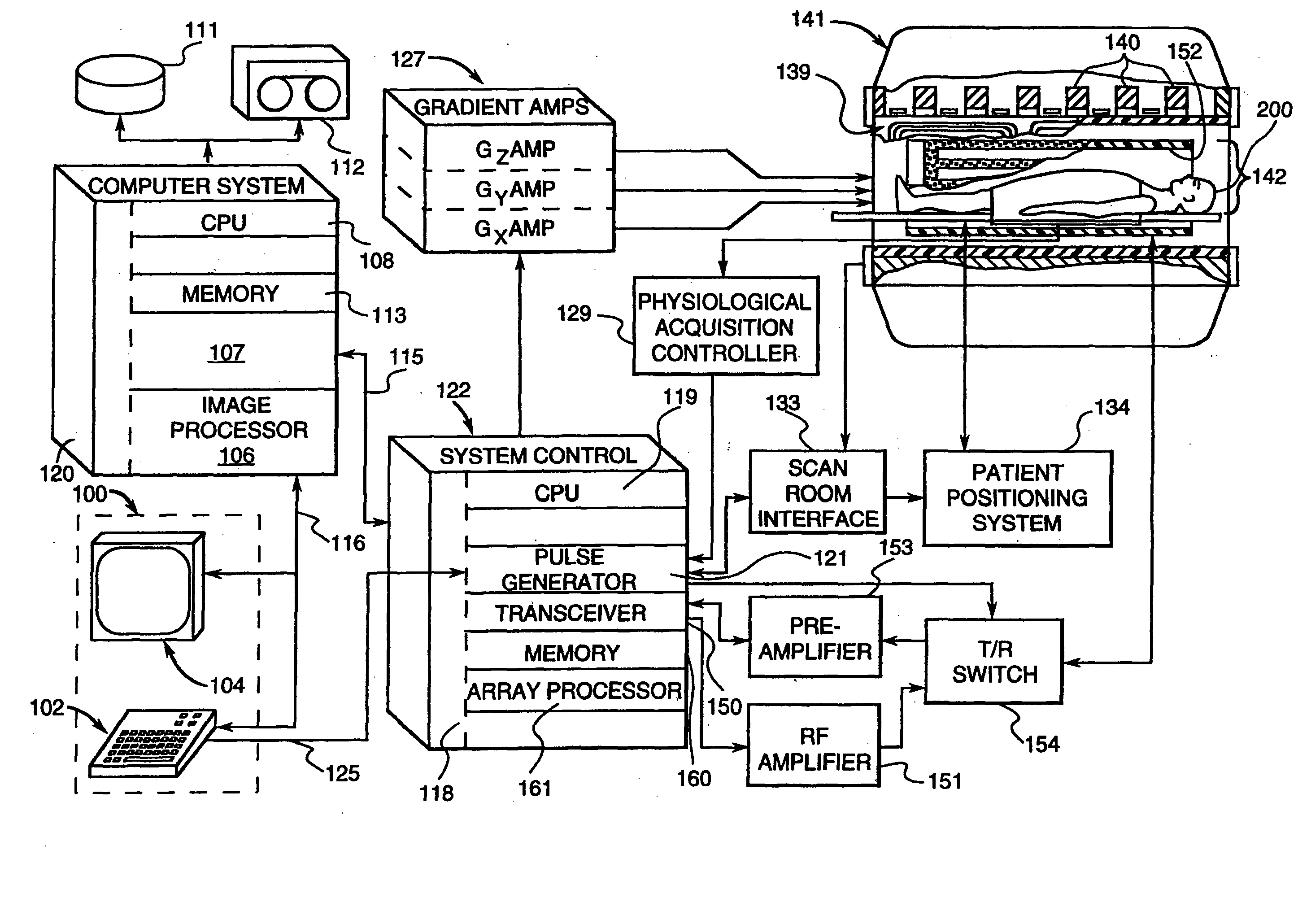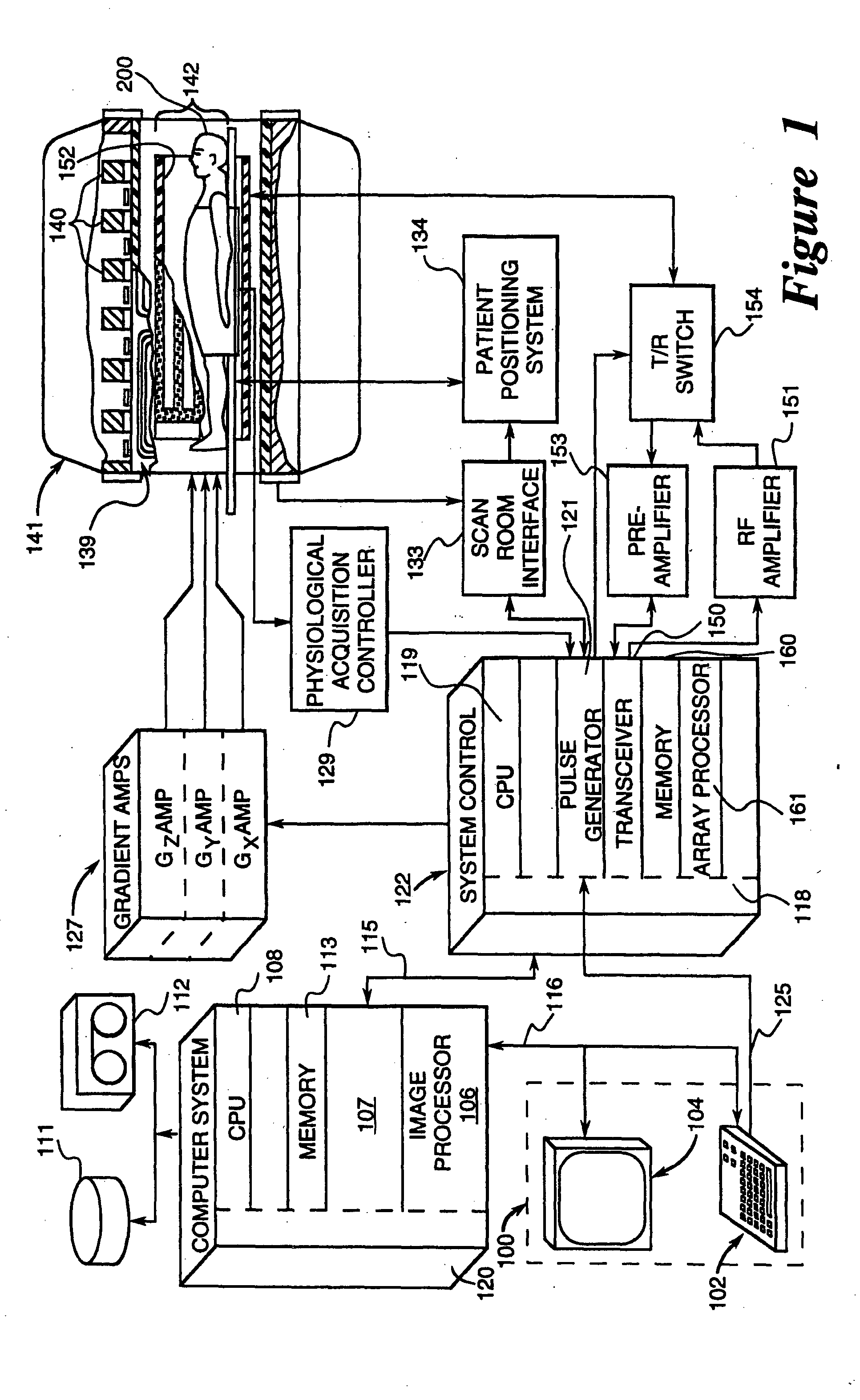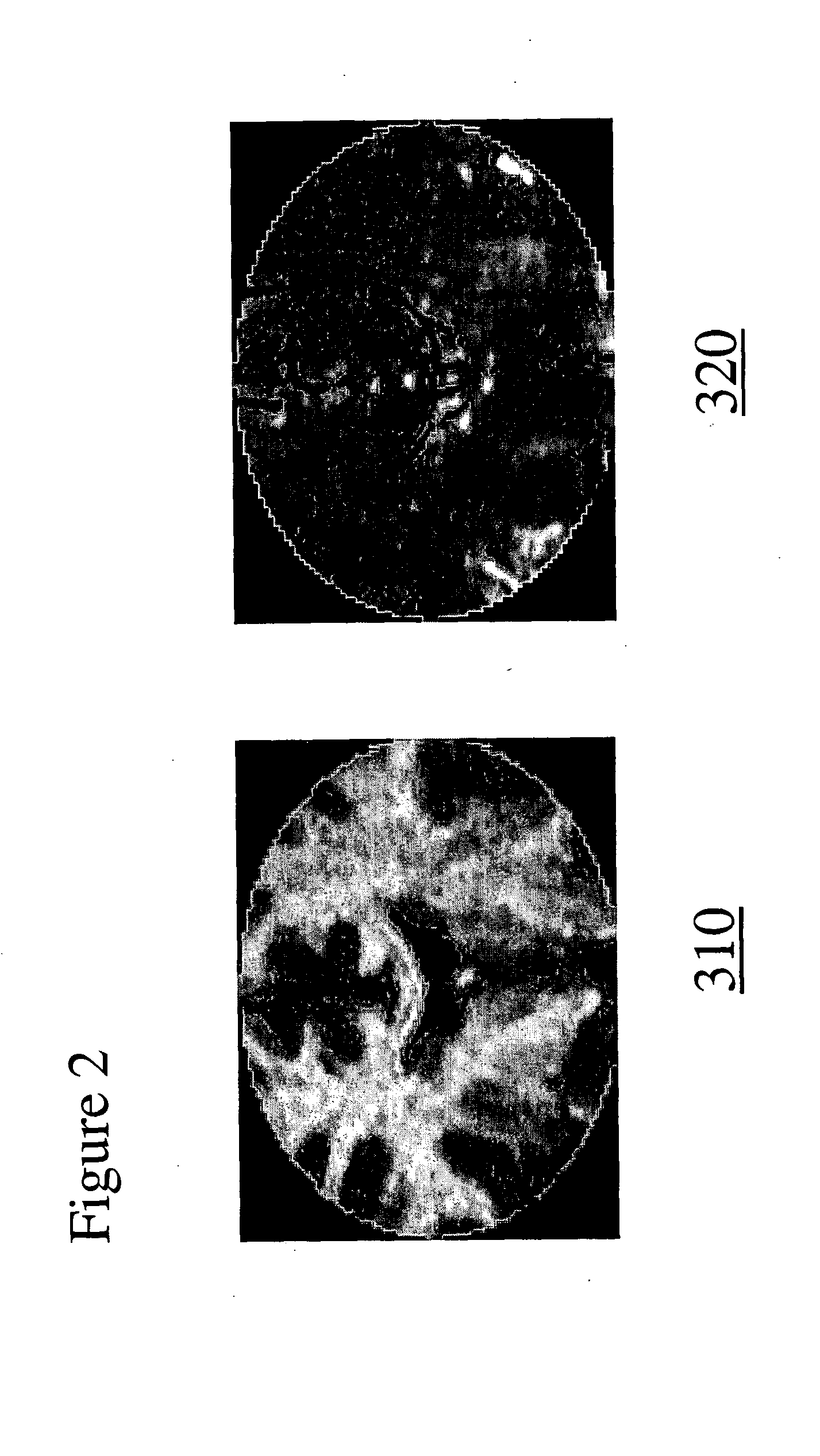System and method for the detection of brain iron using magnetic resonance imaging
- Summary
- Abstract
- Description
- Claims
- Application Information
AI Technical Summary
Benefits of technology
Problems solved by technology
Method used
Image
Examples
Embodiment Construction
[0012] MRI scanners, which are used in various fields such as medical diagnostics, typically use a computer to create images based on the operation of a magnet, a gradient coil assembly, and a radio frequency coil(s). The magnet creates a uniform main magnetic field that makes nuclei, such as hydrogen atomic nuclei, responsive to radio frequency excitation. The gradient coil assembly imposes a series of pulsed, spatial-gradient magnetic fields upon the main magnetic field to give each point in the imaging volume a spatial identity corresponding to its unique set of magnetic fields during the imaging pulse sequence. The radio frequency coil(s) creates an excitation frequency pulse that temporarily creates an oscillating transverse magnetization that is detected by the radio frequency coil and used by the computer to create the image.
[0013] Generally, very high field strength is characterized as greater than 1.5 Tesla (1.5 T). In recent years, there has been an increase in usage of M...
PUM
 Login to View More
Login to View More Abstract
Description
Claims
Application Information
 Login to View More
Login to View More - R&D
- Intellectual Property
- Life Sciences
- Materials
- Tech Scout
- Unparalleled Data Quality
- Higher Quality Content
- 60% Fewer Hallucinations
Browse by: Latest US Patents, China's latest patents, Technical Efficacy Thesaurus, Application Domain, Technology Topic, Popular Technical Reports.
© 2025 PatSnap. All rights reserved.Legal|Privacy policy|Modern Slavery Act Transparency Statement|Sitemap|About US| Contact US: help@patsnap.com



